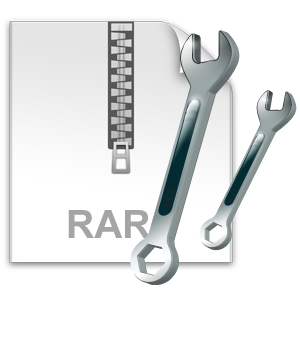Polythene Feeder Rar File
US9157069B2 - Method of producing pancreatic hormone-producing cells- Google Patents US9157069B2 - Method of producing pancreatic hormone-producing cells- Google Patents Method of producing pancreatic hormone-producing cellsInfo Publication number US9157069B2 US9157069B2 US13/814,878 US78A US9157069B2 US 9157069 B2 US9157069 B2 US 9157069B2 US 78 A US78 A US 78A US 9157069 B2 US9157069 B2 US 9157069B2 Authority US United States Prior art keywords cells step medium cell used Prior art date 2010-08-09 Legal status (The legal status is an assumption and is not a legal conclusion. Google has not performed a legal analysis and makes no representation as to the accuracy of the status listed.) Active, expires 2031-10-18 Application number US13/814,878 Other versions Inventor Masaki Hosoya Masanobu Shoji Current Assignee (The listed assignees may be inaccurate. Google has not performed a legal analysis and makes no representation or warranty as to the accuracy of the list.)Takeda Pharmaceutical Co LtdOriginal Assignee Takeda Pharmaceutical Co Ltd Priority date (The priority date is an assumption and is not a legal conclusion.
Google has not performed a legal analysis and makes no representation as to the accuracy of the date listed.) 2010-08-09 Filing date 2011-08-08 Publication date 2015-08-09 Priority to JP priority Critical 2010-08-09 Priority to JP2010-178523 priority 2011-08-08 Application filed by Takeda Pharmaceutical Co Ltd filed Critical Takeda Pharmaceutical Co Ltd 2011-08-08 Priority to PCT/JP2011/068487 priority patent/WOA1/en 2013-02-11 Assigned to TAKEDA PHARMACEUTICAL COMPANY LIMITED reassignment TAKEDA PHARMACEUTICAL COMPANY LIMITED ASSIGNMENT OF ASSIGNORS INTEREST (SEE DOCUMENT FOR DETAILS). CROSS-REFERENCE TO RELATED APPLICATIONSThis application is the national phase application pursuant to 35 U.S.C. §371 of International Application No. PCT/JP2011/068487, filed Aug.
8, 2011, which claims the benefit of priority of Japanese Patent Application No. 1, filed Aug. These applications are hereby incorporated herein by reference in their entireties. TECHNICAL FIELDThe present invention relates to a production method of pancreatic hormone-producing cells and a medicament comprising the pancreatic hormone-producing cells obtained by the production method and the like. BACKGROUND OF THE INVENTIONPancreas has endocrine glands (endocrine cells) and exocrine glands (exocrine cells), and is an organ playing an important role by the both cells. Exocrine cells mainly play a role of secreting digestive enzymes such as pancreatic lipase, trypsin, elastase, pancreatic amylase and the like.Endocrine cells play a role of secreting pancreatic hormones, and it is known that glucagon is secreted from pancreatic α cells, insulin is secreted from pancreatic β cells, somatostatin is secreted from pancreatic δ cells, and pancreatic polypeptide (sometimes to be abbreviated as PP in the present specification) is secreted from PP cells. In recent years, it has been reported that ghrelin, which is a stomach-secreted hormone, is also secreted from pancreas.Insulin plays an important role of promoting utilization of glucose, protein synthesis, and formation and storage of neutral fats, lowering blood glucose level, and maintaining blood glucose at a normal concentration.
Pancreatic glucagon plays an important role, along with insulin, in a sugar metabolism regulatory mechanism, as a hyperglycemic hormone via hepatic glycogenolysis, gluconeogenesis action and the like. Somatostatin expresses an action by binding to a somatostatin receptor, and suppresses secretion of various hormones such as glucagon, insulin and the like in the pancreas. PP is a hormone secreted from the cells of islets of Langerhans in response to diet, known as a satiety factor, and reduces food ingestion and body weight gain. Ghrelin is known to stimulate food ingestion, and increase body weight gain by reducing fat oxidation.Diabetes is a disease developed by insufficient insulin and loss of the function thereof, and difficult to cure once it is developed. Diabetes can be largely classified into two types of type I diabetes mellitus (insulin dependent diabetes) and type II diabetes mellitus (non-insulin dependent diabetes).Type II diabetes mellitus is a chronic disease developed by resistance to insulin, which becomes problems in relation to lifestyle habits such as obesity due to overeating and inactivity, stress etc.
Polythene Feeder Rar File Download

Rar File Opener
Type II diabetes mellitus is often developed in middle-aged adults, and many of the diabetes patients are affected with this type diabetes.Type I diabetes mellitus is a chronic disease caused by destruction of insulin-producing cells by autoimmune diseases, virus infection and the like to terminate secretion of insulin in the body. As a treatment method that can automatically control blood glucose level that continuously changes in the body and reduce burden on patients, pancreas transplantation or pancreatic islet transplantation is performed on patients with type I diabetes mellitus. While it is possible to achieve a normal blood glucose level by these treatment methods, the transplantation technique has not been sufficiently established, and the pancreas and pancreatic islet that can be transplanted are not sufficient. Moreover, to avoid immune rejection to a graft, the patients need to take an immunosuppressant for the entire life, and the problems of the risk of infection, side effects caused by immunosuppressant and the like still remain.One of the treatment methods tried for type I diabetes mellitus is a method including reproducing an insulin-producing cell itself from the cells derived from the patient, and transplanting the cell into the body of the patient. According to this method, insulin can be produced in the body of the patient. In addition, since the cells are the patient's own cells, the method is also advantageous in terms of safety, since the problem of rejection can be resolved and the like.Known methods for obtaining insulin-producing cells include a method of differentiating ES cells, a method of differentiating tissue stem cells of the pancreas of a patient, a method of isolating cells derived from the pancreatic duct epithelium of a patient out of body and differentiating the same and the like.